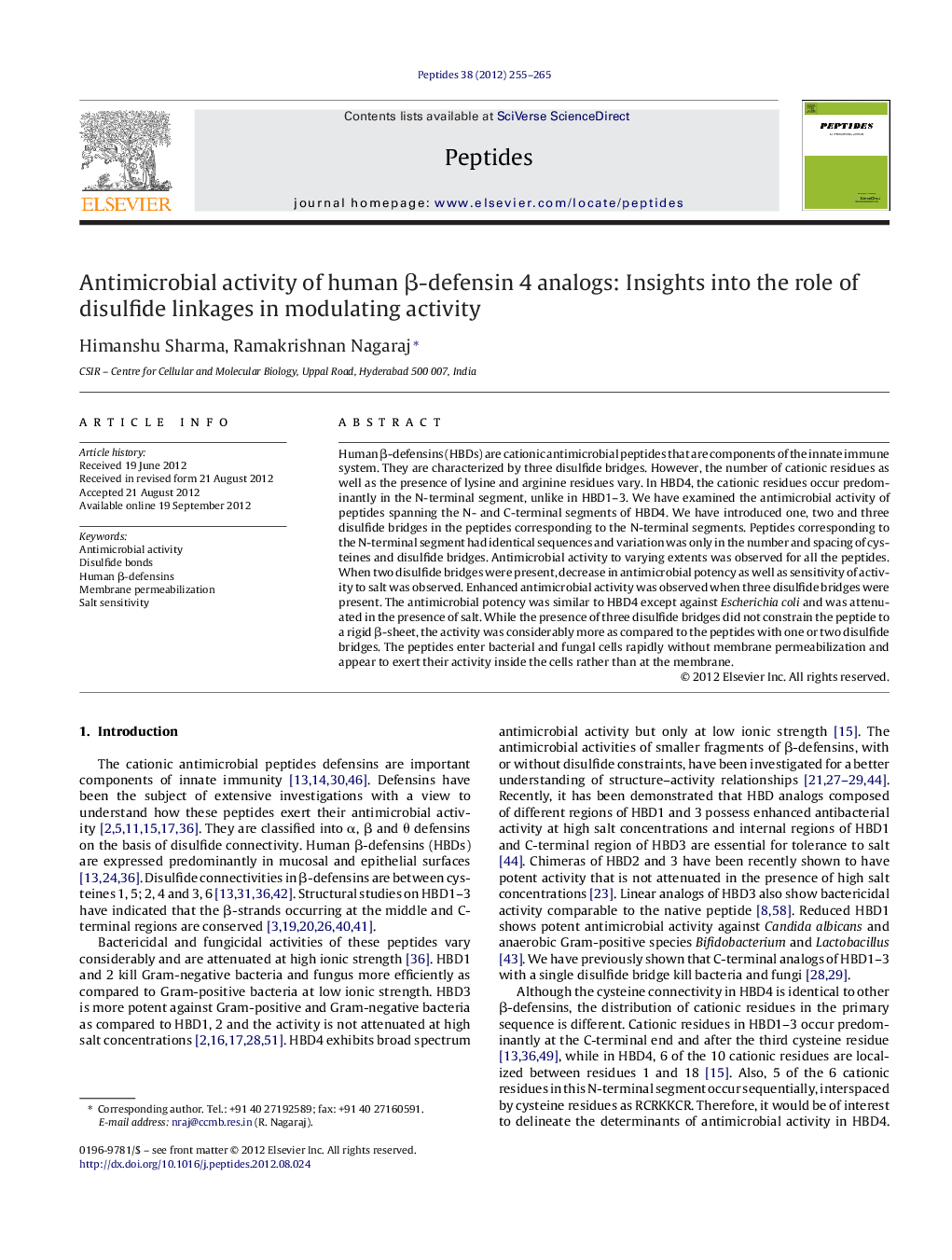| Article ID | Journal | Published Year | Pages | File Type |
|---|---|---|---|---|
| 2006244 | Peptides | 2012 | 11 Pages |
Human β-defensins (HBDs) are cationic antimicrobial peptides that are components of the innate immune system. They are characterized by three disulfide bridges. However, the number of cationic residues as well as the presence of lysine and arginine residues vary. In HBD4, the cationic residues occur predominantly in the N-terminal segment, unlike in HBD1–3. We have examined the antimicrobial activity of peptides spanning the N- and C-terminal segments of HBD4. We have introduced one, two and three disulfide bridges in the peptides corresponding to the N-terminal segments. Peptides corresponding to the N-terminal segment had identical sequences and variation was only in the number and spacing of cysteines and disulfide bridges. Antimicrobial activity to varying extents was observed for all the peptides. When two disulfide bridges were present, decrease in antimicrobial potency as well as sensitivity of activity to salt was observed. Enhanced antimicrobial activity was observed when three disulfide bridges were present. The antimicrobial potency was similar to HBD4 except against Escherichia coli and was attenuated in the presence of salt. While the presence of three disulfide bridges did not constrain the peptide to a rigid β-sheet, the activity was considerably more as compared to the peptides with one or two disulfide bridges. The peptides enter bacterial and fungal cells rapidly without membrane permeabilization and appear to exert their activity inside the cells rather than at the membrane.
► Antimicrobial activity of human β-defensin 4 analogs was investigated. ► Activity depends on the position and number of disulfide bonds. ► Analogs do not permeabilize microbial membranes. ► Analogs rapidly accumulate inside microbial cells.
